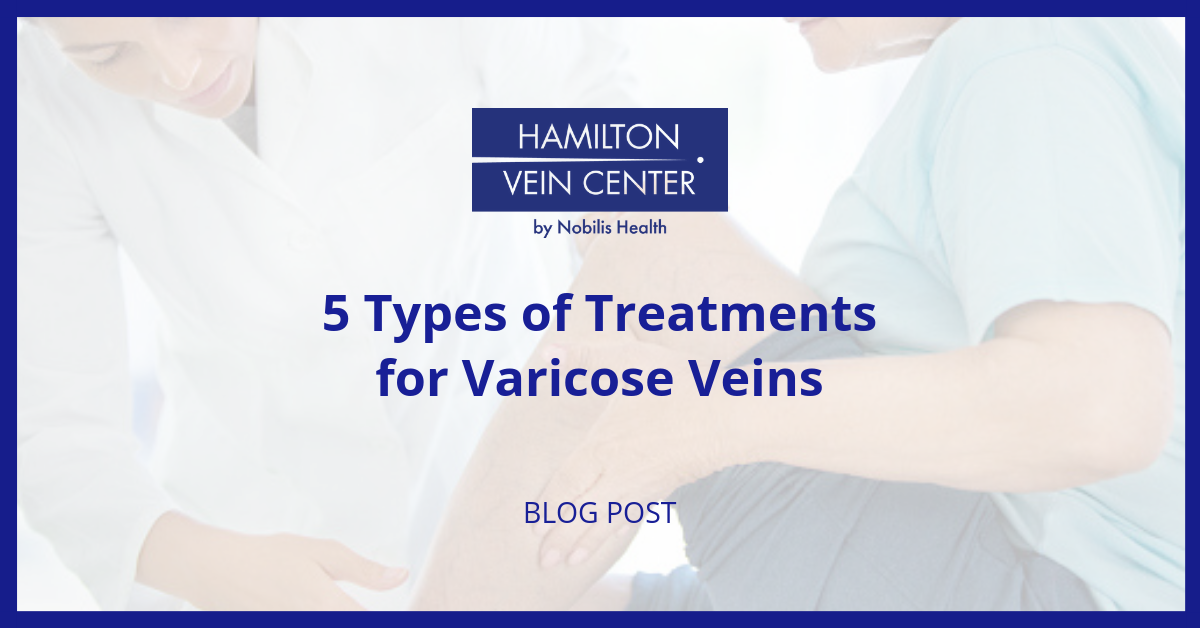Varicose Vein Treatments: The 5 Major Types

A Common Problem
There’s no shame in having varicose veins; in fact, according to the American Society for Vascular Surgery, 20 to 25 million US residents have it. [1] Characterized by circulation problems in the limbs that lead to swollen, painful, and sometimes discolored veins, this condition is a source of discomfort, pain, and tiredness, while also being unsightly.
There’s certainly great value in managing and treating this condition, but the question is: what does this look like? What are the main approaches to varicose veins? Here’s a quick breakdown of the five major medical approaches to this condition:
1. Compression Stockings
Typically, the first line of treatment for varicose veins—and almost always recommended to be worn after other treatments—compression stockings are a sufferer’s best friend. For milder and more moderate cases, wearing these helps prevent blood from pooling in the lower limbs and promotes positive circulation. While this approach, on its own, won’t solve more advanced and major cases, it’s a common, standby treatment.
2. Vein Stripping
The longest running surgical approach to this condition, vein stripping is an open surgery that physically seals off swollen, diseased veins, and, as needed, removes them. This forces blood to travel through healthier pathways while removing the problematic veins. As a more open surgery, it’s highly effective in taking on the problem; however, recovery is a little more intense than other, newer approaches. As with many surgeries, pain, bruising, and fatigue follows the procedure for a couple weeks.
3. Sclerotherapy
The main aim of sclerotherapy is to seal up diseased problem veins in the legs thus causing blood to reroute to healthier pathways. This is done by injecting a specialized solution to the area, which breaks down vein walls and leads to scarring. As healing occurs, varicose veins of medium or smaller scope disappear. A newer development of this type is foam sclerotherapy, in which the solution is an astringent foam. These are highly effective; in 2014, a study found 83 percent of patients experienced decreases in pain after treatment. [2]
4. Laser Surgery
A non-invasive approach to sealing off varicose veins, laser surgery is newer and promises to revolutionize how these are treated. At its core, this approach is like sclerotherapy in that it induces scarring and thereby causes blood to be re-routed to healthier pathways. [3] Instead of the chemical solution, though, this works by directing lasers to problem areas. Recovery is relatively quick, and no matter if it’s directed at larger varicose veins or smaller ones, it’s painless and well-tolerated.
5. Radiofrequency Ablation
With similar aims as sclerotherapy or laser approaches, radiofrequency ablation (RFA) employs radio-waves to heat up problem areas. This is delivered via catheter to the affected area, which is numbed using local anesthetic. As such RFA is a minimally-invasive and largely pain-free approach. Studies have found this technique to be as effective as laser surgery and vein stripping, with satisfaction rates, overall, very high due and recovery rates very quick. [4] RFA has become a viable standard in treating varicose veins.
Healthy Steps Forward
What’s important to note here is that people with varicose veins do have a range of options; this condition is by no means destiny. Indeed, with the right help—and the right kind of care—the associated pain and discomfort can be taken care of. It all starts with the patient making the decision to be proactive and to figure out a solution.
The experts at Hamilton Vein & Vascular specialize in a range of minimally-invasive surgical techniques to effectively treat varicose veins. Employing a patient-centric approach to care, this Texas-based team prides itself in ensuring that every patient walks away healthier and happier. Learn more about what they do by calling their Houston office at (281) 565-0033, the Austin location at (512) 710-1114, or San Antonio at (210) 405-4707.
References
- “What Are Varicose Veins?”. 2014. SIGVARIS United States. Accessed December 4 2018. https://www.sigvaris.com/usa/en-us/conditions/varicose-veins.
- “Sclerotherapy For Varicose And Spider Veins”. 2018. Healthline. Accessed December 4 2018. https://www.healthline.com/health/sclerotherapy.
- “Laser Treatment For Varicose Veins | Michigan Medicine”. 2018. Org. Accessed December 4 2018. https://www.uofmhealth.org/health-library/tn10097.
- Poder, Thomas G., Jean-François Fisette, Suzanne K. Bédard, and Marc-Antoine Despatis. 2018. “Is Radiofrequency Ablation Of Varicose Veins A Valuable Option? A Systematic Review Of The Literature With A Cost Analysis”. Canadian Journal Of Surgery 61 (2): 128-138. Joule Inc. doi:10.1503/cjs.010114.